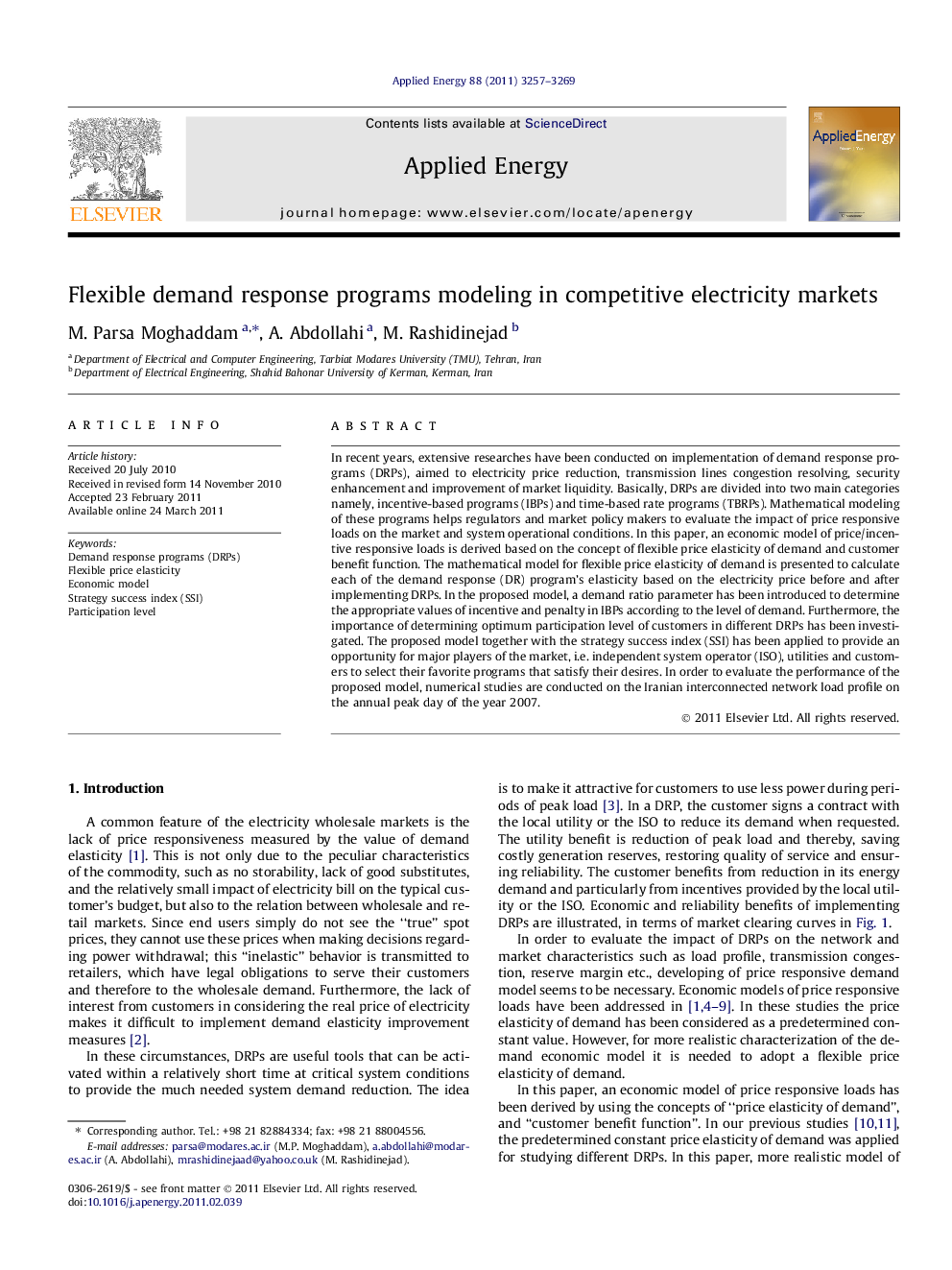| Article ID | Journal | Published Year | Pages | File Type |
|---|---|---|---|---|
| 243799 | Applied Energy | 2011 | 13 Pages |
In recent years, extensive researches have been conducted on implementation of demand response programs (DRPs), aimed to electricity price reduction, transmission lines congestion resolving, security enhancement and improvement of market liquidity. Basically, DRPs are divided into two main categories namely, incentive-based programs (IBPs) and time-based rate programs (TBRPs). Mathematical modeling of these programs helps regulators and market policy makers to evaluate the impact of price responsive loads on the market and system operational conditions. In this paper, an economic model of price/incentive responsive loads is derived based on the concept of flexible price elasticity of demand and customer benefit function. The mathematical model for flexible price elasticity of demand is presented to calculate each of the demand response (DR) program’s elasticity based on the electricity price before and after implementing DRPs. In the proposed model, a demand ratio parameter has been introduced to determine the appropriate values of incentive and penalty in IBPs according to the level of demand. Furthermore, the importance of determining optimum participation level of customers in different DRPs has been investigated. The proposed model together with the strategy success index (SSI) has been applied to provide an opportunity for major players of the market, i.e. independent system operator (ISO), utilities and customers to select their favorite programs that satisfy their desires. In order to evaluate the performance of the proposed model, numerical studies are conducted on the Iranian interconnected network load profile on the annual peak day of the year 2007.
